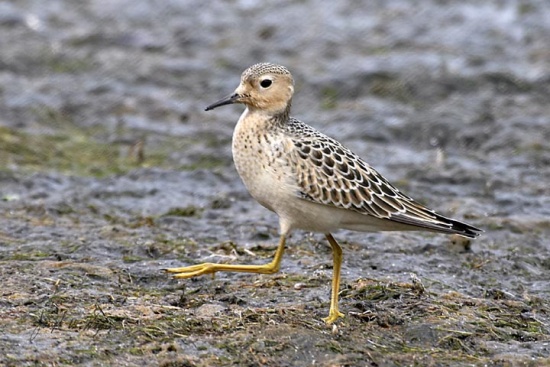Nomdeploom (talk | contribs) |
|||
| Line 6: | Line 6: | ||
==Distribution== | ==Distribution== | ||
| − | '''Breeding''': Tundra of eastern [[Siberia]] to [[Canada]]. | + | '''Breeding''': Tundra of eastern [[Siberia]] to [[Canada]]. <br> |
'''Non-breeding''': Mainly [[South America]], but known as a vagrant almost worldwide. | '''Non-breeding''': Mainly [[South America]], but known as a vagrant almost worldwide. | ||
==Taxonomy== | ==Taxonomy== | ||
| Line 23: | Line 23: | ||
{{GSearch|Tryngites+subruficollis}} | {{GSearch|Tryngites+subruficollis}} | ||
| − | [[Category:Birds]] [[Category:Tryngites | + | [[Category:Birds]] [[Category:Tryngites]] |
Revision as of 14:30, 26 February 2009
- Tryngites subruficollis
Identification
45cm. Buff head, neck and underparts, scaly brown upperparts, black streaked crown, cream throat, fine spots on each side of breast, short, straight bill, green-yellow legs.
Distribution
Breeding: Tundra of eastern Siberia to Canada.
Non-breeding: Mainly South America, but known as a vagrant almost worldwide.
Taxonomy
Monotypic.
Habitat
Dry grassy areas.
Behaviour
The female builds a nest on the ground, lined with grass. 3-4 eggs are laid and incubated by the female for 3 weeks. The chicks leave the nest less than 12 hours after hatching in order to feed themselves.
The diet includes earthworms, aquatic insects and larvae, and seeds.
References
ARKive




